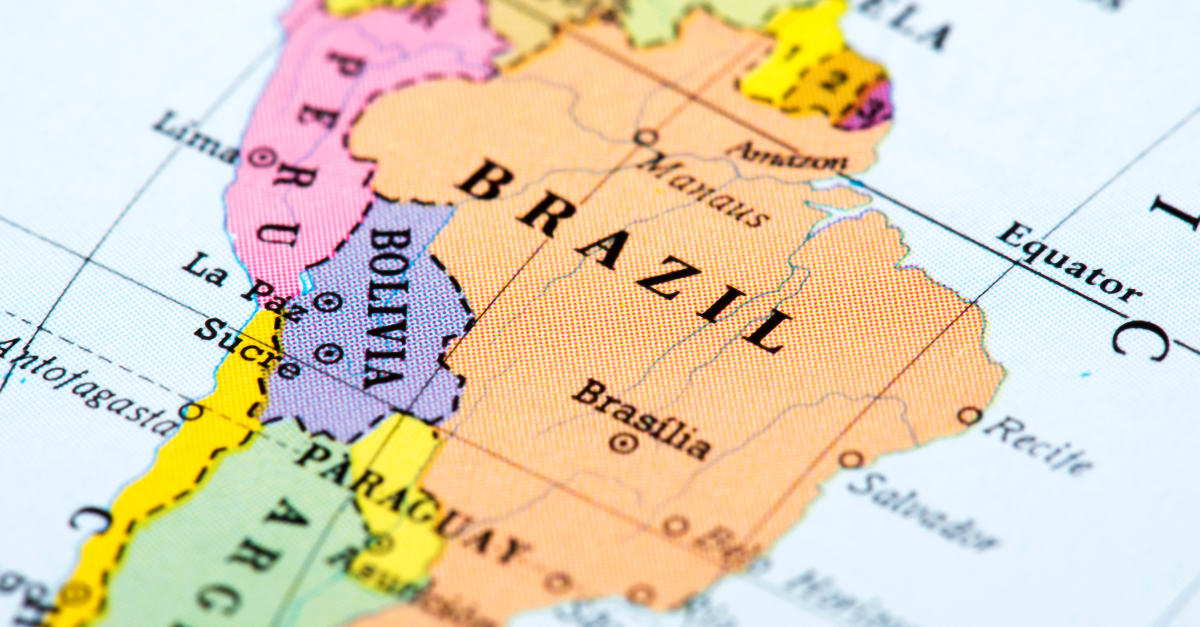
The SR500 Blueprint: How Morocco and Switzerland are Industrializing Rooftop Solar

Foreign Direct Investment in Brazil: Mining at the Center of a New Capital Cycle
.png)
As Argentina’s energy transition gains momentum, Schneider Electric is at the forefront of introducing technologies that make the country’s power infrastructure cleaner, smarter and more resilient. In this exclusive interview, Sergio Ferrari, Director de Power Systems for Argentina, Paraguay, and Uruguay, discusses how the company’s innovative AirSeT technology is replacing one of the most potent greenhouse gases in the grid with pure air, supporting renewable integration, advancing decarbonization goals, and enabling sustainable growth across Argentina and Latin America.
Schneider Electric is a recognized leader in energy management and automation. Can you explain how your innovative solutions, particularly AirSeT technology, are helping accelerate the energy transition in Argentina and Latin America?
Schneider Electric’s SM AirSeT technology represents a fundamental step toward building a decarbonized and resilient electrical infrastructure in Latin America. In a context where the energy transition is accelerating, driven by exponential growth in renewable energy sources, AirSeT enables the replacement of SF₆ gas, one of the most potent greenhouse gases in the world, with pure air as an insulating medium in medium-voltage switchgear. This is a key innovation for decarbonizing the electrical grid without compromising efficiency or operational safety.
In countries like Argentina, where much of the electricity matrix is already supplied by clean sources such as solar and wind, implementing technologies like AirSeT is essential to ensure that renewable energy is transported and distributed without adding emissions to the system. With this solution, Schneider Electric supports the growth of industrial, urban and rural electrification with a technologically advanced, accessible offer aligned with international climate commitments. In this way, AirSeT is not only a technical innovation, it becomes a strategic enabler of the energy transition across the region.
AirSeT technology marks a significant breakthrough in medium-voltage switchgear by replacing SF₆ gas with pure air insulation. How does this innovation help reduce the carbon footprint of electrical infrastructure, and what role does it play in meeting Argentina’s decarbonization goals?
AirSeT marks a turning point in how we design and operate more sustainable power networks. By completely eliminating SF₆ gas, whose atmospheric lifespan and global warming potential far exceed CO₂, this technology directly reduces emissions associated with the lifecycle of electrical infrastructure. Moreover, using pure air avoids the need for SF₆ gas recovery, treatment, and recycling processes, which are not only costly but carry environmental risks in the event of leaks.
This innovation fully aligns with both national and international climate commitments. Argentina has outlined clear emissions reduction targets, and technologies like AirSeT are essential to achieving them, especially in energy-intensive sectors such as industry, mining and urban infrastructure. In this context, Schneider Electric’s promotion of SF₆-free solutions contributes not only to climate change mitigation, but also to an orderly, accessible and technically sound transition.
As urbanization and industrial growth drive the need for more robust electrical infrastructure, how does Schneider Electric’s AirSeT address the challenges of grid expansion while ensuring environmental and operational safety?
Grid expansion demands solutions that are sustainable, efficient, safe and scalable. Within this framework, AirSeT provides an integrated response that combines technical robustness with low environmental impact. This technology offers the same functionality as traditional SF₆-based switchgear, but in a more compact, safer, and easier-to-install format, crucial for dense urban environments and complex industrial settings.
AirSeT also eliminates the use of toxic or pressurized gases, improving operator safety and reducing risks during installation and maintenance. This approach is particularly relevant in Latin America, where much of the electrical infrastructure coexists with public spaces and requires reliable, environmentally safe operation. In short, AirSeT supports energy demand growth with solutions that address both technical challenges and sustainability imperatives.
Schneider Electric is known for its focus on sustainability. How does AirSeT align with the company’s broader sustainability goals, particularly in the context of renewable energy integration and electrification in Latin America?
AirSeT lies at the heart of Schneider Electric’s sustainability strategy. It reflects the company’s concrete commitment to decarbonization, energy efficiency, and the circular economy. Indeed, it is part of the Green Premium portfolio, solutions designed to reduce environmental impact from conception through the end of their lifecycle. The use of pure air instead of fluorinated gases is in line with the eco-design and sustainability principles that guide all of Schneider’s innovations.
As electrification becomes central to decarbonizing sectors like transportation, industry and buildings, AirSeT enables the development of robust energy infrastructure without compromising climate goals.
We already have use cases in South America, where this technology is being implemented in small solar farms, projects of around 1MW that will total an estimated 150MW of solar energy. In these projects, using SF₆-free technology will cut carbon emissions by 2,000 tons of CO₂. This means not only decarbonizing the source of generation, but also the process of inserting that energy into the grid and transporting it.
The solution is complemented by platforms like EcoStruxure and consulting services like EcoConsult and EcoFit, which help integrate renewables, optimize energy use and digitize energy management. AirSeT is not just purpose-driven technology, it amplifies the positive impact of Schneider Electric’s entire sustainable value proposition in the region.
Given the critical role of digital technologies in modern energy systems, how does AirSeT integrate with Schneider Electric’s broader EcoStruxure platform, and what benefits does this provide to energy operators in Argentina?
One of AirSeT’s major strengths is its native integration with EcoStruxure, Schneider Electric’s open, interoperable, IoT-enabled platform. This integration allows energy operators to access critical electrical system data in real time, conduct predictive diagnostics, reduce faults and proactively plan maintenance.
In Argentina, where many distribution networks are in need of modernization, this digital connectivity is a strategic tool to address challenges like technical losses, overloads and unplanned outages. Additionally, EcoStruxure integration enables the deployment of modular solutions tailored to each customer’s needs, optimizing investment and accelerating returns. This results in tangible improvements in operational efficiency, energy security and the overall sustainability of the national grid.
At Argentina Energy Week, Schneider Electric will meet with key industry stakeholders. What strategic partnerships or collaborations does the company hope to explore to advance the energy transition in the region and strengthen its presence in Argentina?
During this week, Schneider Electric aims to strengthen its role as a strategic partner in building a more efficient, digitalized and decarbonized energy matrix. The company is open to developing public-private partnerships that promote active energy efficiency policies, electrification of industrial processes and grid modernization.
It will also prioritize joint work with companies in the mining, energy and infrastructure sectors, helping them transition to more sustainable operational models through solutions such as AirSeT, digital twins, IoT platforms and specialized consulting services.
The company will continue expanding its network of integrators, distributors and technology partners to scale its impact across Argentina. Collaborating with government institutions will also be key to driving regulations that support the adoption of clean, efficient technologies.


.png)